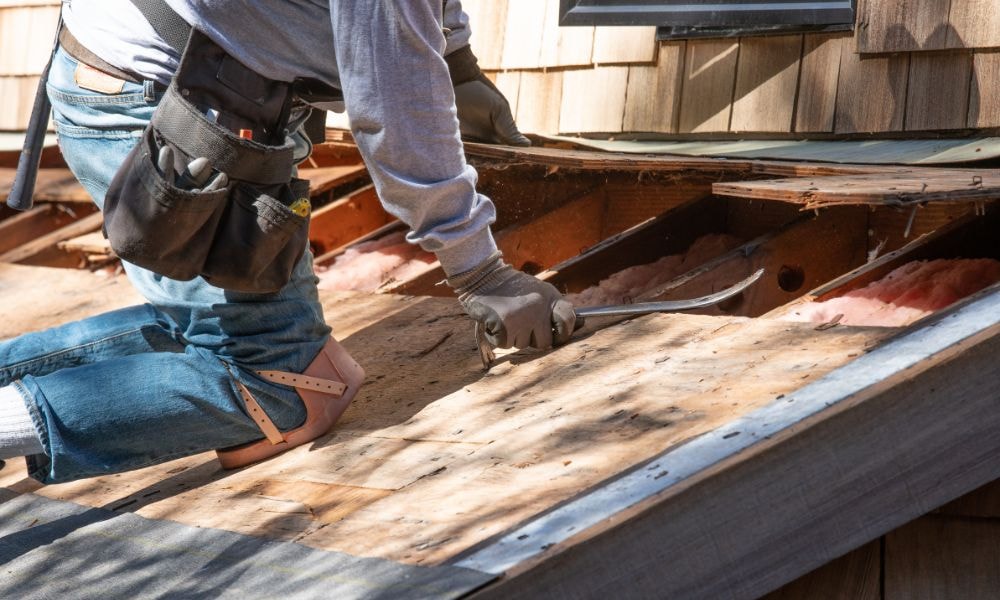Why Insulation Removal Is Key To A Healthy Home
Remove Old Insulation To Enhance Air Quality, Reduce Health Risks, And Improve Energy Efficiency. Upgrade To Modern Materials For A Healthier, More Valuable Home.
- The Problems with Old or Damaged Insulation
- Signs Your Insulation Needs to Be Removed
- Benefits of Insulation Removal
- The Insulation Removal Process
- Assessment and Inspection
- Choosing the Right Professionals
- Preparation for Removal
- Safe and Efficient Removal Techniques
- Disposal of Old Insulation
- Replacing Insulation: Options and Benefits
- Types of Insulation Materials
- Benefits of Modern Insulation
- Long-term Maintenance for Healthy Insulation
- Transform Your Home with Effective Insulation Practices
Remove old insulation to enhance air quality, reduce health risks, and improve energy efficiency. Upgrade to modern materials for a healthier, more valuable home.
When we think of a healthy home, insulation might not be the first thing that comes to mind, but it plays a pivotal role in our living environments. Insulation in our homes is like a silent guardian; it regulates temperatures, reduces energy costs, and enhances comfort. Proper insulation acts as a barrier against cold in winter and heat in summer, ensuring that our heating and cooling systems work efficiently. However, not all insulation setups maintain their effectiveness forever. Over time, existing insulation can deteriorate or become less efficient, necessitating a thorough assessment and often removal.
The need to remove insulation usually arises from several scenarios that compromise the safety and efficiency of a home. Dampness, pest infestations, or mold growth can damage attic cleaning materials, undermining the integrity and effectiveness of the insulation material.
Similarly, renovations or updates to a home might require old insulation to be cleared out to make way for modern, more efficient materials. In these cases, the process of removing insulation not only clears away potential health hazards but also paves the way for new, improved insulation that can significantly enhance the home's energy efficiency and air quality.
@superior.attic Top 3️⃣ reasons why we remove old attic insulation! #atticinsulation #atticinsulationremoval #insulation ♬ Roxanne - Instrumental - Califa Azul
The Problems with Old or Damaged Insulation
Old or damaged insulation can cause a host of issues, impacting your health and leading to higher energy bills. As spray foam insulation or loose fill breaks down, it often becomes a breeding ground for mold and mildew, especially in crawl spaces. This not only threatens your home’s structural health but also aggravates allergies and respiratory conditions.
Moreover, such insulation is prone to pest infestations. Rodents and insects find old insulation materials ideal for nesting, necessitating professional pest control to manage these infestations and the health hazards from their left-behind contaminants and droppings.
Inadequate insulation leads to poor temperature regulation throughout your home, forcing your heating and cooling systems to overwork and spike your energy costs. Hiring an attic insulation contractor to evaluate and rectify these problems can significantly enhance your home's energy efficiency, stabilize indoor temperatures, and alleviate associated health risks.
Signs Your Insulation Needs to Be Removed
Recognizing when to remove old insulation is crucial for maintaining the health and efficiency of your home. Here are key indicators that it might be time for new insulation installation:
- Visible Damage and Deterioration: If you notice that the insulation material is crumbling, compacting, or water-stained, these are clear signs of degradation that necessitate removal.
- Unusual Odors: Persistent musty or foul smells emanating from areas like the crawl space can indicate mold growth or pest presence within the insulation.
- Increased Utility Bills: A sudden rise in heating and cooling costs suggests that your insulation is no longer performing effectively.
- Inconsistent Indoor Temperatures: If some rooms are noticeably colder or warmer than others, this inconsistency can be due to failing insulation.
- Presence of Pests: Signs of rodents or insects, such as droppings or noises within the walls, often mean that the insulation has been compromised and needs replacing.
If you observe any of these signs, it's advisable to contact a professional for a thorough assessment and to discuss the best options for insulation removal and replacement.
Benefits of Insulation Removal
Removing outdated or damaged insulation offers many advantages, including the immediate improvement of your home's environmental quality. This process clears out the old materials that may be harboring contaminants, leading to fresher and cleaner indoor air. Energy efficiency is significantly enhanced after replacing inefficient insulation, which stabilizes your home's temperatures and reduces the strain on heating and cooling systems.
Fresh insulation can prevent various potential health risks linked to old insulation, such as microbial growth and pest infestations. As a bonus, updating your home's insulation can also boost its market value, presenting it as a better-maintained and more energy-efficient property to prospective buyers.
The Insulation Removal Process
Insulation removal is a detailed procedure designed to enhance your home’s safety and energy efficiency. The following steps outline the systematic approach professionals take to remove old or damaged insulation effectively.
Assessment and Inspection
The first step in the insulation removal process is a thorough assessment and inspection. This crucial phase involves a professional examining your insulation to identify any damage, contamination, or inefficiency. They assess the extent of the issue and determine the best approach for removal and replacement.
Choosing the Right Professionals
Selecting the right professionals is key to ensuring that your insulation is removed safely and efficiently. Look for experienced and licensed contractors who specialize in insulation removal. These professionals should have a solid track record of handling the complexities of removal and the nuances of installing new insulation.
Preparation for Removal
Before the actual removal begins, the area must be properly prepared. This might involve sealing off the work area to prevent contaminants from spreading to other parts of the home and ensuring that all necessary tools and safety equipment are in place.
Safe and Efficient Removal Techniques
There are primarily two techniques used for insulation removal: vacuum removal and manual removal. Vacuum removal involves using specialized equipment to suck out loose fill or batt insulation, which is effective and minimizes the spread of dust and debris. Manual removal, on the other hand, might be necessary for materials that are more firmly attached or where precision is needed.
Disposal of Old Insulation
After the insulation has been removed, it must be disposed of properly. Professionals will handle the disposal of old insulation materials in accordance with local regulations to ensure that no harmful substances harm the environment or public health. Proper disposal is essential to prevent any potential contamination from old materials.

Replacing Insulation: Options and Benefits
Upgrading your home's insulation is not just a maintenance task—it's an improvement project that can transform the comfort and efficiency of your living space.
Types of Insulation Materials
- Fiberglass: Composed of fine glass fibers, fiberglass is popular for its cost-effectiveness and ability to reduce inconsistent temperatures.
- Cellulose: Made from recycled paper products, cellulose is treated with fire retardants and excels in blocking drafts and improving temperature consistency.
- Spray Foam: Spray foam expands on application, filling gaps and crevices, which is crucial for sealing air leaks and improving overall energy efficiency.
Benefits of Modern Insulation
Upgrading to modern insulation materials offers substantial improvements in home comfort and energy management. These materials significantly enhance energy efficiency, directly addressing high energy bills by providing better sealing against air and moisture infiltration. This upgrade not only ensures consistent temperatures throughout your home but also improves indoor air quality by reducing the entry of outdoor pollutants and allergens. Additionally, the soundproofing qualities of modern insulation contribute to a quieter and more peaceful home environment, making it an excellent investment for both comfort and cost savings.
Long-term Maintenance for Healthy Insulation
To ensure your house's insulation remains effective, conduct regular inspections to spot any signs of wear, such as water damage or material degradation. Seal gaps and cracks promptly to maintain thermal efficiency and prevent air leaks. Implement moisture control measures to protect against mold and potential water damage, particularly important for materials like rock wool. Also, pest prevention strategies should be deployed to keep insulation free from rodent and insect damage, safeguarding its integrity and performance.
Transform Your Home with Effective Insulation Practices
Timely removal of old insulation is a powerful step toward a healthier and more efficient home. Removing outdated or damaged insulation significantly improves indoor air quality and mitigates various health risks, making your living space safer and more comfortable. Additionally, replacing old insulation with modern, efficient materials boosts your home's value and offers considerable energy savings by ensuring stable indoor temperatures and reducing energy costs.
The process of insulation removal and replacement includes assessing existing materials, selecting skilled professionals, preparing the site for safe removal, and using the right techniques to effectively dispose of old insulation. Meticulously following these steps will help homeowners maintain the long-term efficacy of their insulation, resulting in a healthier, energy-efficient environment.

